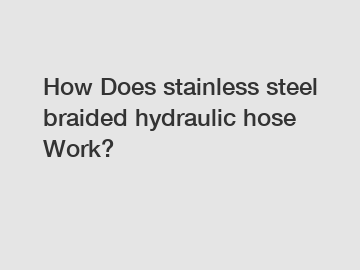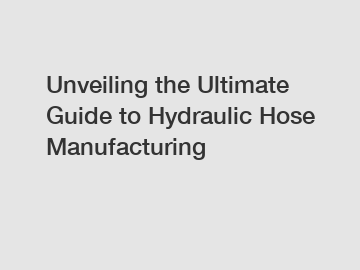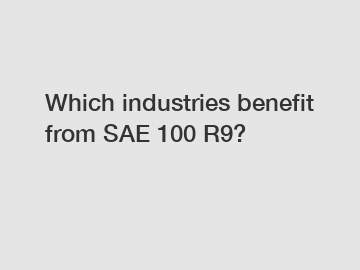The Synthetic Rubber Production Process
The Synthetic Rubber Production Process
Synthetic rubber is any man-made elastomer. They’re polymers made from petroleum byproducts. Synthetic rubber, like natural rubber, has several applications in the automobile sector, including tyres, door and window profiles. As well as seals such as O-rings and gaskets, hoses, belts, matting, and flooring.
Although natural rubber is both a renewable resource and a hugely versatile material, there are some needs it cannot meet. Natural rubber melts at around 180°C, meaning it can’t be used in applications where temperatures may exceed that limit. Additionally, it’s too brittle for use in applications where it would need to be flexible or malleable without losing structural integrity.
Rubber’s core structure is something that scientists have been trying to emulate for years. This has resulted in a broad range of types of rubber. Namely, high-quality synthetic rubbers manufactured specifically to meet the needs of particular industries and sectors.
Synthetic Rubber Sustainability
Synthetic rubber differs from natural rubber in that it doesn’t occur naturally, even though it shares many of its defining characteristics with processed latex.
The synthetic rubber industry as a whole is part of a global effort to make rubber production more sustainable overall, as the base compounds in synthetic rubber are predominantly polymers synthesised from petroleum byproducts.
Aquaseal Rubber Ltd is always looking for ways to further increase our sustainability levels by reducing the amount of non-renewable resources used in our production process.
What is the synthetic rubber production process?
The synthetic rubber production process follows several important steps, each of which may change slightly depending on the chosen types of rubber. The steps below loosely outline the general steps involved in processing and manufacturing a typical synthetic rubber.
A hydrocarbon mixture (from oil or coal) is created and refined.
Naphtha; a flammable liquid hydrocarbon mixture used to manufacture gasoline and plastics; is combined with natural gases. This reaction produces monomers, which bind molecules together to create polymers. Common monomers used to make synthetic rubbers include Styrene-Butadiene Rubber (SBR), Nitrile Rubber (NBR) and Butyl Rubber (IIR).
Chemical agents are used to turn the individual polymers into polymer chains. This forms a rubber substance.
In a process called vulcanisation, the rubber substance will be processed into a rubber product. Vulcanisation works by converting polymers into more durable material by adding accelerators such as sulphur.
The rubber is then moulded into the desired shape, before it undergoes quality assurance checks.
Types of synthetic rubber
Even though synthetic rubber is man-made, it is just as reliable as its natural counterpart. At Aquaseal Rubber, we process and manufacture a number of different synthetic rubbers, each for different purposes.
- Neoprene
Neoprene rubbers are based on polychloroprene; a polymer composed of chloroprene, acetylene, and hydrochloric acid. Aquaseal formulate high quality neoprene by modifying the chemical structure of polychloroprene and adding additional elements to ensure the end product features a broad range of chemical properties. - Ethylene Propylene Diene Monomer (EPDM)
EPDM rubber is based on ethylene and propylene. Aquaseal add a small amount of diene to these compounds so we can cure the rubber with sulphur. This changes their chemical structure to that of an unsaturated polymer, resulting in EPDM.
- Styrene Butadiene Rubber (SBR)
Related links:
Can I Reuse a Dustproof Disposable PE Apron?
Choosing the Best Rubber Hose for Your Needs
Your Complete Guide to Choosing an O-Ring Supplier
What chemical process is used to make rubber?
What plastic is used in engineering?
The Ultimate Guide to OEM Hydraulic Hoses
Ultimate Guide to Steel Wire Braided HoseSBR is a polymeride which we create using styrene and butadiene. Those compounds are derived from petroleum at an oil refinery, before we combine the two with a ratio of 25/75 for styrene/butadiene. - Butyl Rubber
Butyl rubber is a copolymer created using isobutylene and isoprene – isobutylene is a compound made of methyl and propylene, and isoprene makes the rubber unsaturated and capable of vulcanisation.
- Fluoroelastomers
Fluoroelastomers are a family of copolymers originally composed of hexafluoropropylene and vinylidene. Aquaseal modify the consistency of our fluoroelastomers depending on the needs of our client – we can offer premium, long-lasting reliability even in some of the harshest environments. - Silicone
Silicone rubber is an inorganic polymer comprising of silicone and oxygen, which Aquaseal can modify by adding various chemicals to improve performance. Adding fluorine to silicone rubber compounds will make it solvent-resistant; phenyl will improve low temperature flexibility and resists gamma radiation; and vinyl makes vulcanisation more effective. - Buna N Rubber
Buna N rubber (also known as standard Nitrile rubber ) is a synthetic rubber compound comprising acrylonitrile and butadiene – two copolymers. Because acrylonitrile is a volatile organic liquid, when it mixes with butadiene (a synthetic chemical compound) a reaction occurs, producing Buna N rubber.
Get in touch
If you’re looking for a rubber company where product quality and customer service comes first, feel free to call 0191 266 0934 or drop an email to enquiries@aquasealrubber.co.uk.
NATURAL RUBBER
Natural rubber is strong and flexible and protects against wear and tear, such as abrasion, fatigue, and exposure to water and certain chemicals. Natural rubber also adheres well to other materials, ideal for making enforced products, such as tires.
Natural rubber has a decent service temperature range, but there may be better choices for extreme heat, harsh lighting, or ozone exposure. Additionally, natural rubber is not highly resistant to fuel, oil, and other substances.
WHAT IS NATURAL RUBBER USED FOR?
Natural rubber can be found in thousands of products, from industrial components to everyday consumer items. These products may include hoses and belts, medical devices, protective gloves, and children’s toys.
The tire industry consumes a significant portion of the world’s natural rubber supply. Natural rubber is often found in high-performance vehicle tires because of its excellent tear strength, even at high temperatures caused by friction. Aircraft, heavy truck, and race car tires are often made from natural rubber.
The tire isn’t the only vehicle part that contains natural rubber. Brake pads, airbags, seals, and other automotive components also rely on rubber’s desirable properties to serve essential functions while the vehicle is in service.
WHAT ARE THE INGREDIENTS USED TO MAKE NATURAL RUBBER?
Every natural rubber product will have a slightly different composition profile based on its service environment. An essential natural rubber recipe includes:
- Latex – a milky white substance harvested from the rubber tree.
- Acids – to trigger clumping of filtered latex.
- Chemicals – for the prevulcanization process.
- Additives – such as fillers, curing agents, antidegradants, and more.
Industrial Applications of Natural Rubber
Most of today’s natural rubber supply comes from a single species of rubber tree, Hevea brasiliensis. Hevea brasiliensis is native to South America, but Hevea brasiliensis plantations can be found all over Southeast Asia. Some major companies are experimenting with making rubber from other plants, but Hevea brasiliensis remains the primary source.
How is rubber made? The first step of the natural rubber production process is harvesting. Rubber trees must be at least six years old before being tapped. Once the tree reaches maturity, a tapper peels back a carefully cut section of the tree’s bark, which disrupts the plant ducts and releases latex, a milky white substance. The latex flows along the grooves of the peeled-back panel and is collected in cups or bags. Rubber tappers then contain all the harvested latex and transport it for processing.
The freshly harvested latex is filtered and packaged into drums. At this stage, acid is added to the latex, which forms clumps. This clumpy fluid is rolled into sheets at a mill, which removes water and prepares the material for drying and smoking.
Next, the latex sheets are treated with chemicals and low, gentle heating, a process called prevulcanization. Stabilizers and other ingredients may be introduced at this stage, depending on the desired final properties of the rubber. Further heating transforms the sheets into a firm, black material that most people recognize as rubber. At this stage, the rubber can be molded, shaped, or otherwise processed into a final product.
The Synthetic Rubber Production Process
How Industrial Rubber is Made - Rubber Manufacturing
Related links:DIN EN853: Everything You Need to Know About Hydraulic Hose Standards
Exploring the Many Types of Hoses
Exploring the Top Gates AC Fittings Catalog
Top 7 R1/1SN Hose Products You Need!
Sae Cover vs Traditional Cover: Which is Right for You?
Everything You Need to Know About OEM Wire Spiral High Pressure Hydraulic Hose
Sae 100 R9 vs Other Hydraulic Hose Options: Comparison
337
0
0
Related Articles
-
339
0
0
-
337
0
0
-
219
0
0
-
307
0
0
-
340
0
0
-
337
0
0








Comments
All Comments (0)